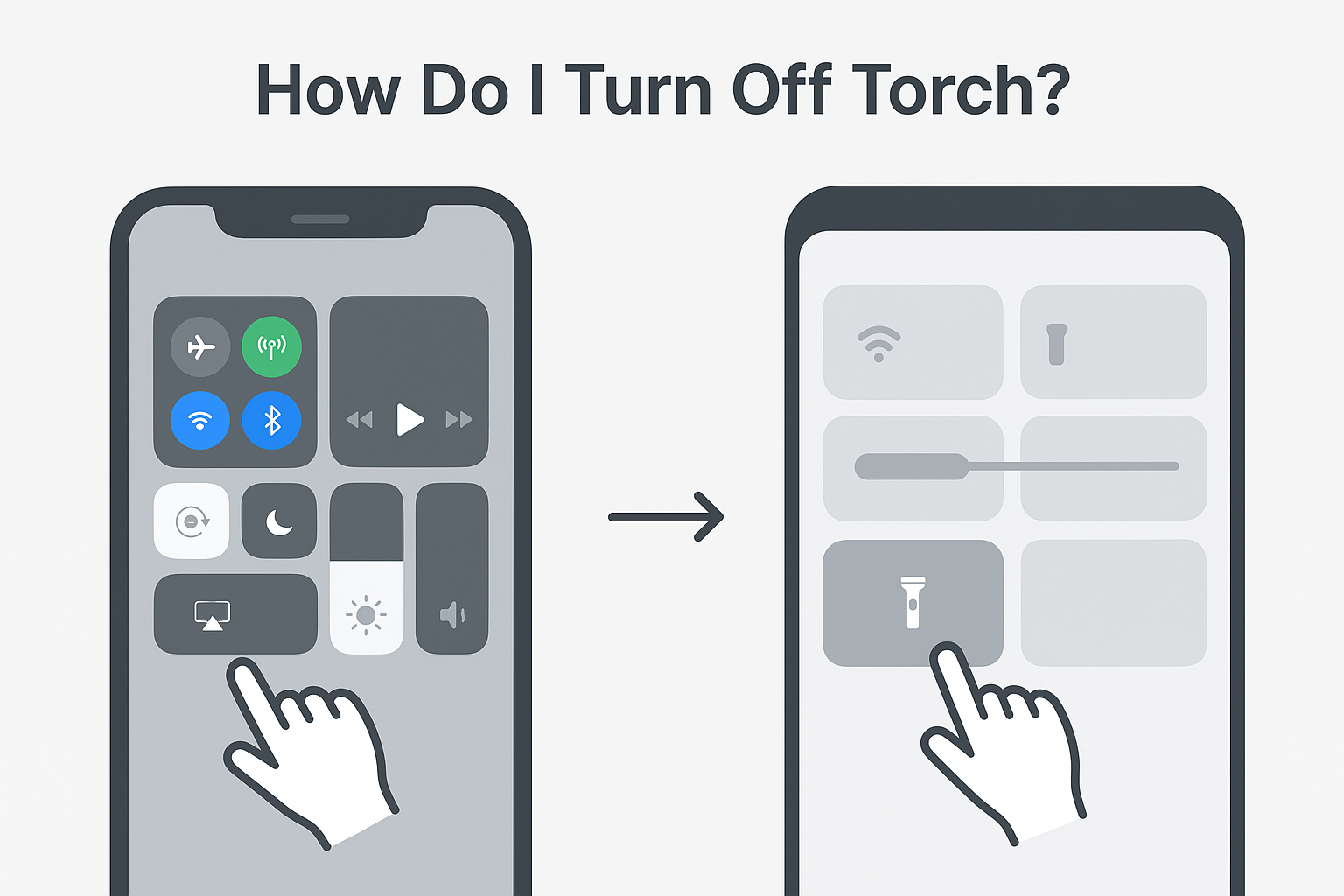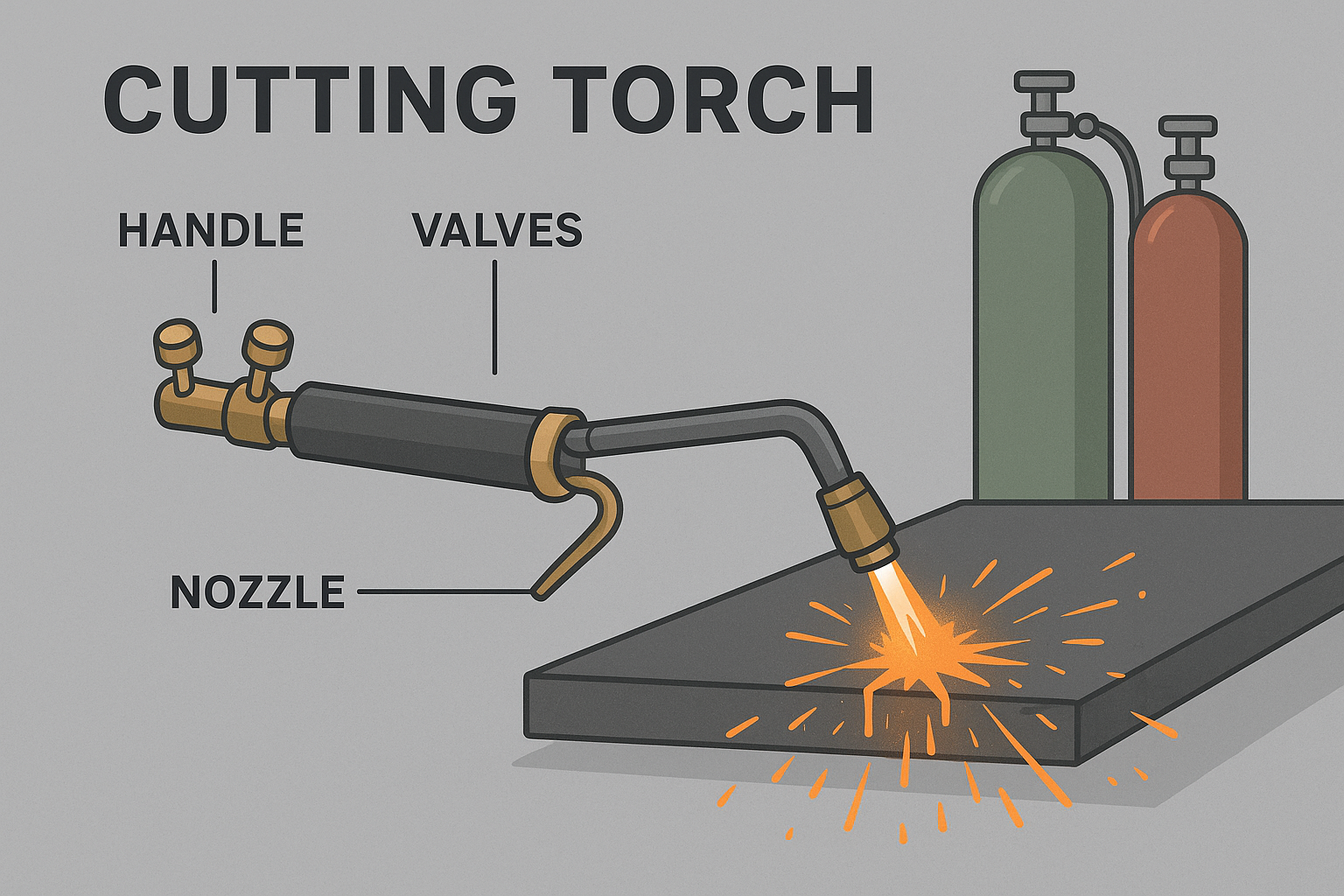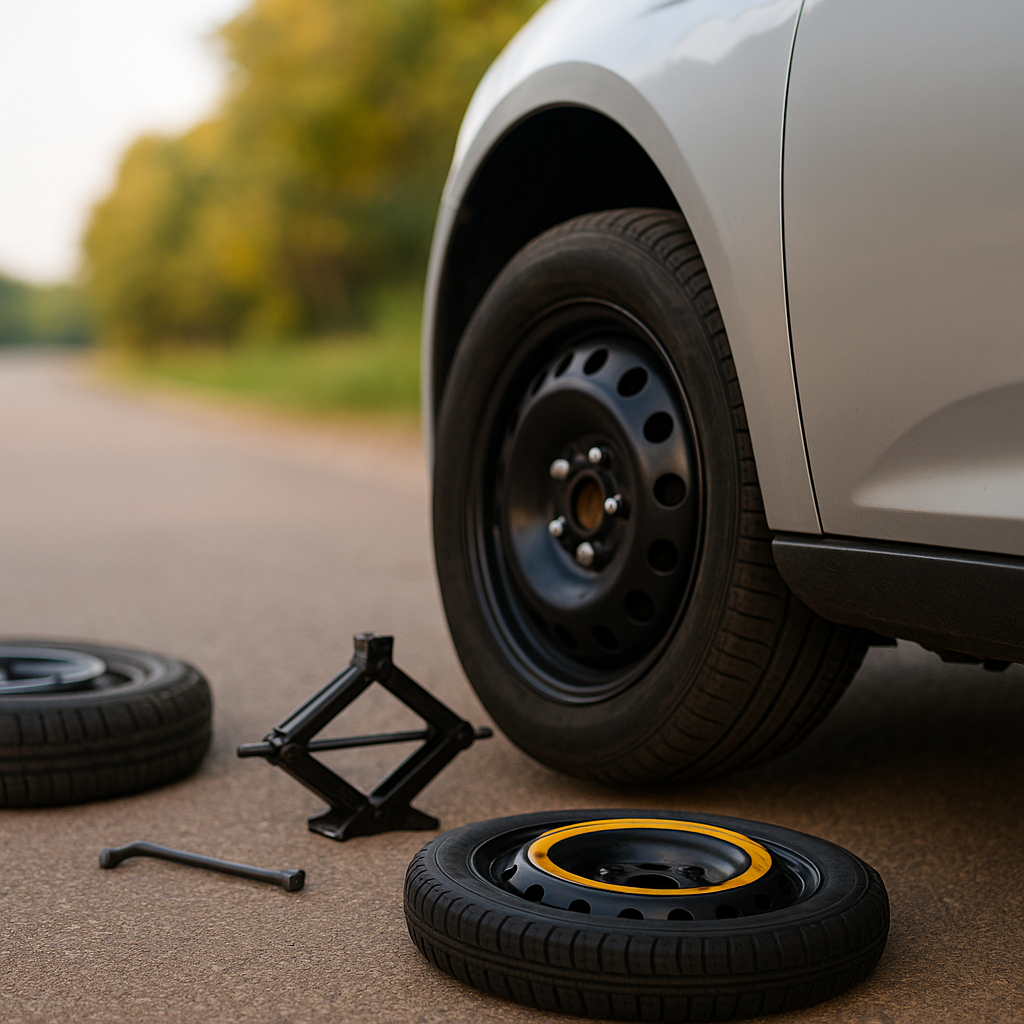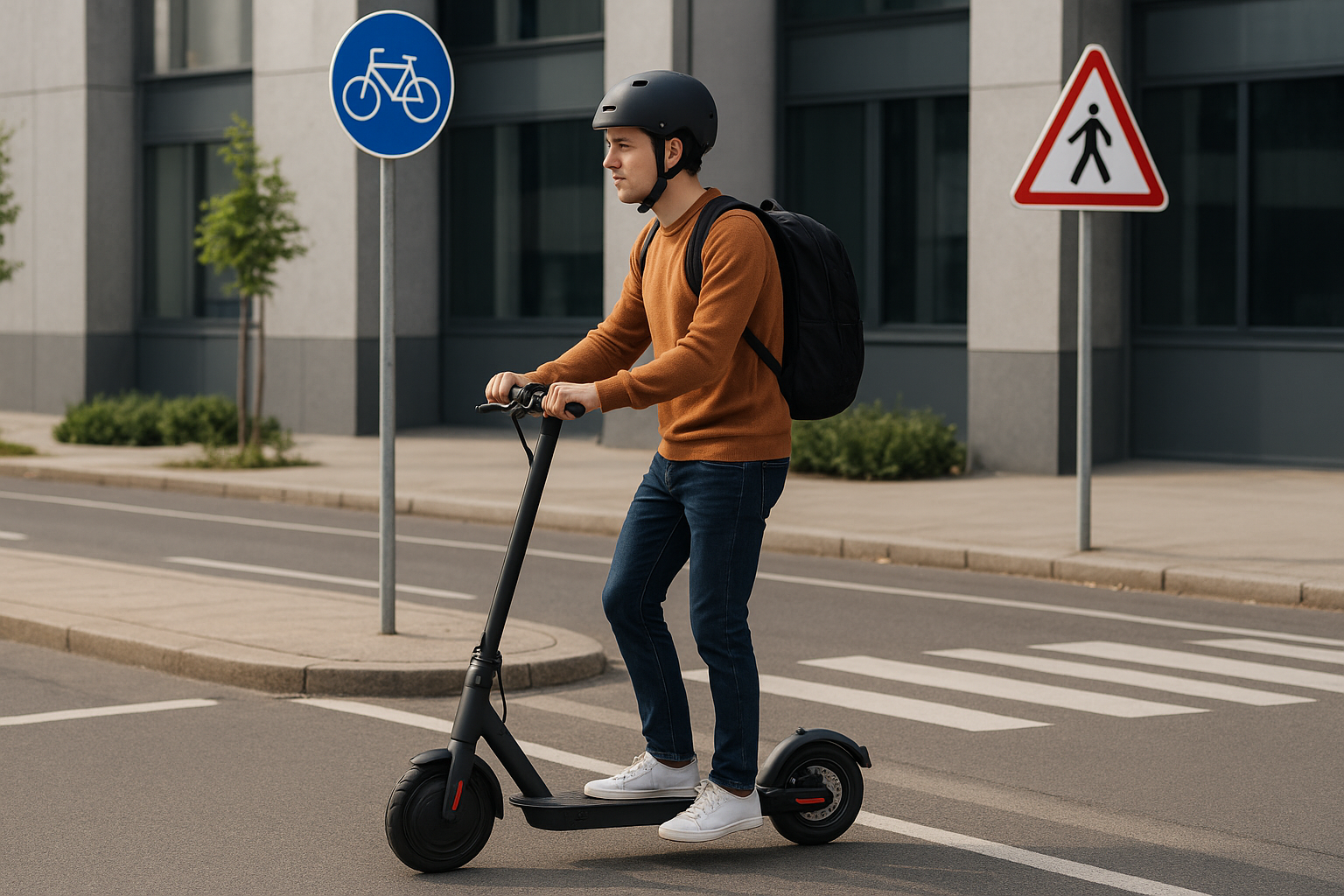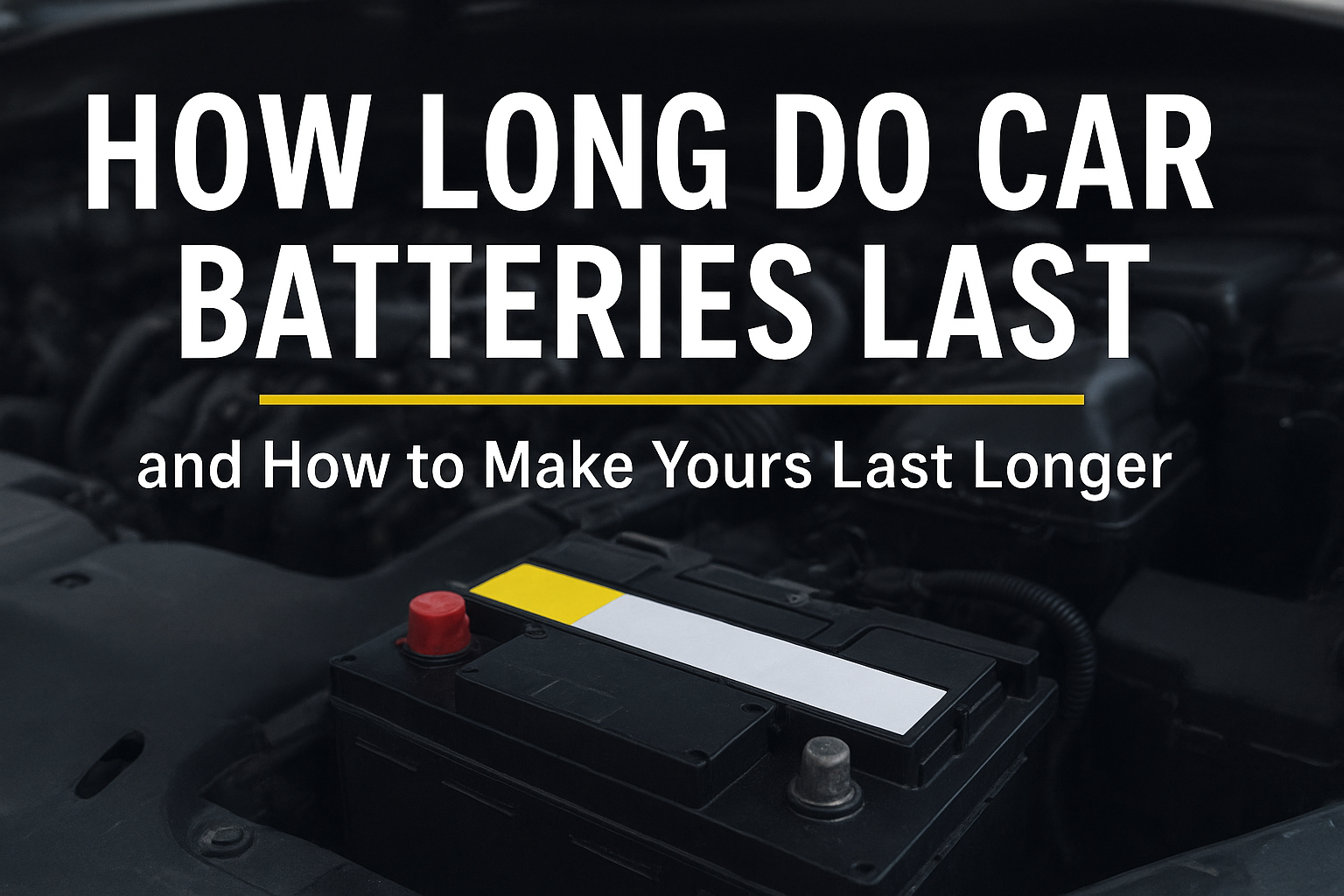Flat tires are like bad Mondays — they pop up when you least expect them, and you just have to deal with them. Whether you’ve hit a nail, a pothole, or the universe just decided to spice up your day, your spare tire is the hero that gets you moving again.
But here’s the question every driver eventually faces: how long can you drive on a spare tire before you’re pushing your luck? Let’s break it down so you know exactly how far you can go — and what steps you should take next.
Quick Answer: How Long Can You Drive on a Spare Tire?
Most temporary “donut” spare tires are safe for about 50–70 miles at speeds under 50 mph (80 km/h).
A full-size spare can last much longer — in some cases indefinitely — as long as it’s in good condition and matches your other tires.
AEO-Friendly Answer: You can usually drive on a donut spare tire for up to 70 miles at speeds below 50 mph. For full-size spares, you can drive much longer, but it’s best to replace or repair your original tire as soon as possible.
The Two Types of Spare Tires
Before you hit the road, you need to know what kind of spare you’re working with — because not all spares are created equal.
1. Temporary “Donut” Spare
- Size: Smaller and narrower than your regular tires.
- Purpose: Short-term use only, to get you to a repair shop.
- Limitations: Lower speed limit (usually 50 mph) and reduced traction.
2. Full-Size Spare
- Size: Matches your regular tires in diameter and width.
- Purpose: Can be used for longer-term driving if necessary.
- Limitations: Still worth replacing soon to keep your tire set even in wear.
Why You Shouldn’t Push a Spare Tire Too Far
Driving on a spare longer than recommended isn’t just a suggestion — it’s about safety and avoiding expensive repairs.
Risks of Overusing a Spare Tire:
- Reduced handling: Smaller tires don’t grip or corner like your normal ones.
- Braking distance increases: Less surface area means less stopping power.
- Uneven wear on other tires: Mismatched tires can cause alignment issues.
- Damage to your drivetrain: Especially in all-wheel-drive vehicles, mismatched tire sizes can cause strain.
What to Do Immediately After Putting on a Spare
If you’ve swapped in your spare, here’s your next-step survival guide:
- Check the Pressure
- Use a gauge — most donut spares require 60 PSI, which is much higher than normal tires.
- Limit Your Speed
- Keep it under 50 mph to prevent overheating and losing control.
- Plan Your Route
- Head directly to a tire shop or service center. No detours, no road trips.
- Avoid Highways If Possible
- Stop-and-go city driving is safer than high-speed highway runs on a donut spare.
Special Cases: Full-Size Spares
If your vehicle comes with a full-size spare that matches your existing tires in size and tread, you can drive much longer without issues. Still, it’s smart to:
- Get the damaged tire fixed ASAP.
- Rotate your tires so wear remains even.
- Check that the spare is the same brand and tread pattern — differences can still affect performance.
Expert Tip: Keep Your Spare in Good Shape
A spare that’s been sitting in your trunk for years might look fine — but rubber degrades over time.
Mechanic Sam Harlow says:
“I’ve seen spares that are over 10 years old. Even if they’ve never touched the road, the rubber can crack, making them unsafe. Check your spare every oil change.”
How to Make Your Spare Last Safely
If you absolutely must drive longer than recommended:
- Keep speeds under 50 mph.
- Avoid hard braking or sharp cornering.
- Drive only on well-paved roads.
- Stop every 10–15 miles to check the tire for heat or wear.
Signs You Need to Replace Your Spare Immediately
- Cracks in the sidewall.
- Worn-down tread.
- Air pressure drops quickly.
- Vibration or pulling when driving.
If you notice any of these, your spare isn’t safe for even short trips.
How to Avoid the Spare Tire Panic
Preparation is the best protection against spare tire stress.
- Check your spare’s pressure regularly.
- Keep a portable tire inflator in your trunk.
- Learn how to change a tire before you need to do it on the side of the road.
The Final Word
How long can you drive on a spare tire? If it’s a donut, think 50–70 miles, slow and steady. If it’s full-size, you’ve got more leeway — but that’s not a free pass to forget about your damaged tire.
Your spare is a safety net, not a permanent solution. Use it wisely, and it will get you home (or to the shop) without turning a flat tire into a bigger headache. 🚗💨






